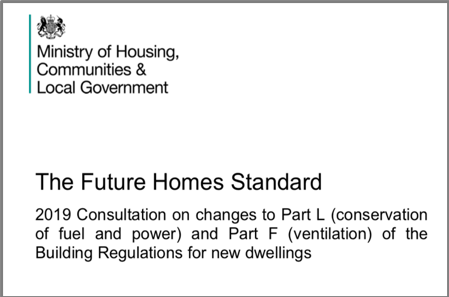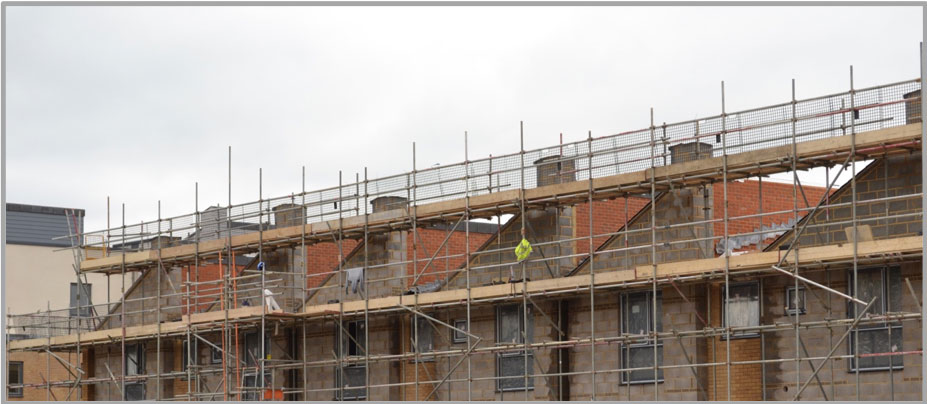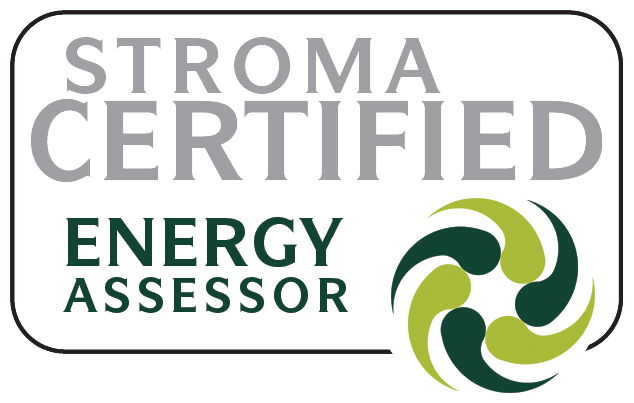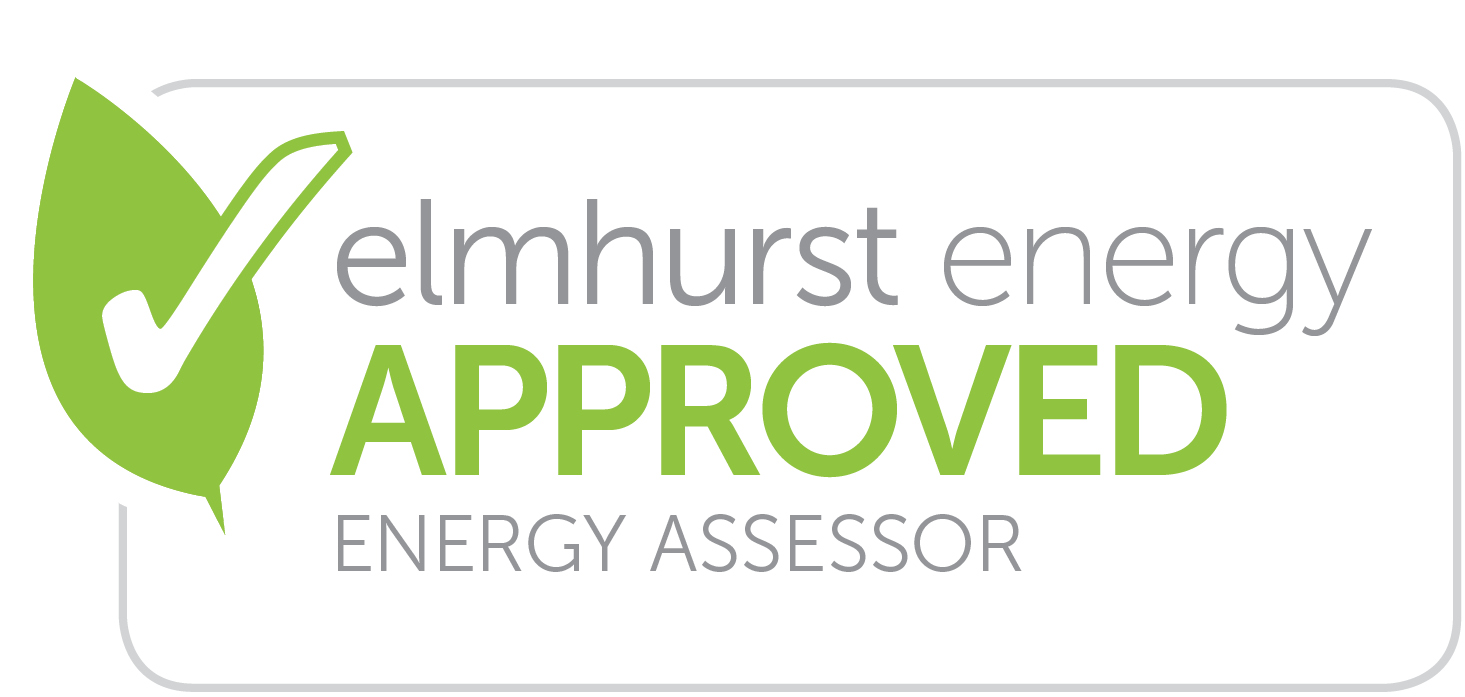Is the Future Homes Standard Consultation the step change in energy efficiency that the new build housing market has required since the back down on Zero Carbon Homes?
 On the 1st October, the Government launched The Future Homes Standard Consultation, a new consultation that is intended to future-proof energy efficiency standards for new build housing from 2020 through to 2025 and beyond to Net Zero Emissions 2050.
On the 1st October, the Government launched The Future Homes Standard Consultation, a new consultation that is intended to future-proof energy efficiency standards for new build housing from 2020 through to 2025 and beyond to Net Zero Emissions 2050.
The consultation sets out Government plans for the Future Homes Standard, which proposes options to increase energy efficiency, introducing low carbon heating and greater use of renewable technologies within the UK’s new homes.
Part L (Energy) and Part F (Ventilation)
This consultation highlights interim options for improvements to Part L (Energy) and Part F (Ventilation) of the building regulations planned to be introduced late 2020 with future plans to fully implement the Future Homes Standard by 2025. Once fully implemented it is anticipated that new Build homes will produce 75-80% less carbon dioxide emission compared to one built to current standards. A link to the full consultation document can be found here.

Options for Uplift to Part L In 2020
The Consultation outlines 2 proposed options to upgrade energy efficiency to be introduced in 2020, via the requirements of Part L of the building regulations along with the introduction of a new version of SAP which will be used as the approved energy model for the SAP calculations:-
Option 1 – ‘Future Homes Fabric’
A 20% reduction in CO2 emissions would be achieved by improvements to the thermal properties of the home.
Option 2 – ‘Fabric plus technology’
A 31% reduction in CO2 emissions delivered predominantly through carbon-saving technology and fabric improvements.
The Government’s preferred approach is option 2 as a stepping stone to the Future Homes Standard 2025. This option obviously gives the greatest impact sooner, however, this option will introduce higher build costs for builders and developers sooner.
Additional proposed changes to Part L
New SAP calculation performance Measures
The consultation proposes 4 other changes to the SAP Calculation methodology to encourage greater energy efficiency improvements:-
- New Primary Energy Target
- CO2 Emission target
- Householder affordability rating
- New min. standards for fabric /services
Changes to Airtightness
There are a number of proposed changes to the airtightness of new homes in Part L 2020 and SAP calculations.
- A proposed new methodology to be developed by CIBSE
- A review of the current sampling procedure, this is likely to require all dwellings to have an air pressure test.
- Discourage very airtight homes by limiting the airtightness to 3m3/m2.h to combat poor ventilation
- The Government is also exploring an alternative testing method to demonstrate compliance with Part L and SAP calculations. The method could simplify the test by using a pulse method at lower pressures.
Improving Compliance and Performance
Studies over the last few years have identified a significant difference between the designed energy efficiency and actual energy efficiency of homes (known as the ‘Performance Gap’). The government is, therefore, proposing changes to improve compliance of Part L and SAP Calculations and improve performance of new build homes.
- Provide better guidance to improve quality and reduce the performance gap
- Provide a new Part L / SAP compliance report
- Propose photographic evidence of key performance areas of the home
- Provide better information on the home to the householder
- Educate occupiers on how to operate the home
Not just New Build Homes
The future homes Standard for New Build homes is looking to be just the start of the Governments plans to overhaul the Energy Efficiency of England’s buildings. With both new and existing homes contributing 20% of CO2 emissions, the government feel they also have to address existing homes as well as Non-domestic property too.
- As set out in the Clean Growth Strategy the Government plans to consult on how to uplift the standards for existing homes where improvement work or change of use is being carried out.
New and Existing non-domestic buildings
Plans are also afoot to consult on revising standards for both new and existing non-domestic property. A consultation on this is planned for early next year.
Summary
An update to Part L of the building regulations and the SAP calculation methodology has been long overdue, the previous iteration of Part L came into force in 2013, over 6 years ago. The SAP calculation model (SAP 2012), in its current form, has been used a similar amount of time. A lot has changed over this period and it is about time Part L and SAP were updated to reflect the changing society we live in. More to follow on this subject – keep an eye out for updates on the Energy Report News Feed.








 We use Energy Report as our main Energy Performance Certificate provider. They are always very quick to act on an instructions and provide a very competitive quote. The report is turned around very swiftly and they are helpful and polite when answering queries. We have no hesitation at all in recommending Energy Report to any of our clients as they always provide excellent service.
We use Energy Report as our main Energy Performance Certificate provider. They are always very quick to act on an instructions and provide a very competitive quote. The report is turned around very swiftly and they are helpful and polite when answering queries. We have no hesitation at all in recommending Energy Report to any of our clients as they always provide excellent service.